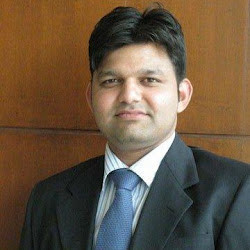- Bihar Infographics
- Infographic on Delhi Strong CM Candidates
- Infographic on Chief Ministers of Delhi
- Infographic on list of Chief Ministers of J and K
- Madhya Pradesh Infographics
- Tamil Nadu Infographics
- Jammu and Kashmir Infographics
- Delhi (DL) Infographics
- Infographic on Devendra Fadnavis and Narayan Rane
- Infographic on Devendra Gangadhar Fadnavis and Uddhav Thackeray
- Infographic on Captain Abhimanyu and Bhupinder Singh Hooda
- Jharkhand (JH) Infographics
- Haryana (HR) Infographics
- Maharashtra (MH) Infographic
- Uttar Pradesh (UP) Infographics
- Indian Lok Sabha
- Rajya Sabha
- Narendra Modi's Cabinet
Maharashtra Politics at Maha Scale
Situated in the western region of India, Maharashtra is known to be the financial capital of the country and is home to major banks, corporate houses and financial institutions. The Maharashtra legislature is bicameral in nature comprising Maharashtra Legislative Assembly,List of Chief Ministers
Name: Prithviraj ChavanParty: Indian National Congress
Tenure: 2010 – till now
Profile
A graduate from the Birla Institute of Technology and Science, Prithviraj Chavan began his political career in 1991. He was the Minister of State in the Prime Minister's Office in the Ministry of Parliamentary Affairs and Ministry of Personnel, Public Grievances, and Pensions. He was also the General Secretary of All India Congress Committee. He became the Chief Minister of Maharashtra for the first time in 2010 and continues in the position till date.
Developments
As Chief Minister, Prithviraj Chavan is believed to have worked for the progress of the state. He had contributed towards farmers’ welfare, where about Rs 9000 crore was directed towards famers’ relief packages. The money was directly deposited to beneficiaries’ accounts in a first of its kind initiative. He now has huge expectations from projects like Delhi-Mumbai industrial corridor that is supposed to usher industrial boom in the state. He was also the man behind many important decisions in the state like being the first state to introduce law against black magic and superstitions, ensuring 16 percent reservation for weaker sections in the Maratha community, creating 11 lakh job opportunities through textile policy, among others.
Brickbats
Though not directly involved, Chavan has been accused of protecting politicians in the Aadarsh Housing society and the irrigation scams. It is believed that in these cases the politicians misused their positions in nexus with bureaucrats for their personal gains.
Name: Sharad Pawar
Party: Nationalist Congress Party
Tenure: 1988-91
Profile
Sharad Pawar is an important politician both at the state and the central level. He is the president of the Nationalist Congress Party (NCP), which he founded in 1990 after breaking away from Congress. Originally a Congress supporter, Pawar has been in and out of Congress. At the Centre, he has served as the Defence and Agriculture Ministers on different occasions and has been the Chief Minister of Maharashtra three times. He is currently a Member of the Rajya Sabha.
Developments
Sharad Pawar is believed to have taken many initiatives towards the progress of common men. Waiving of farmers’ loans, increase in pension of retired defence officers, initiation of orchard development scheme, development of sugar industry are some of such decisions. Besides this, he has been responsible for taking major initiatives for women’s reservations and empowerment.
Brickbats
Pawar is accused of being involved in the 600 billion rupee stamp-paper scam and also in the multi-crore scam involving wheat imports. Besides this, there is a land allotment case against him, where he and his family are alleged to have received special favours. Then he is involved in a controversy related to IPL being exempted from tax, where it is accused that tax exemption was not implemented because of Sharad Pawar’s association with BCCI (He has earlier been the BCCI president). He is also involved in the Lavasa controversy, where he is alleged to have demanded compensation for allowing Lavasa Hill City to be constructed. He is also under scanner for his involvement in the 2G scam and was once in news for his alleged links with underworld.
Name: Manohar Joshi
Party: Shiv Sena
Tenure: 1995-99
Profile
Manohar Joshi, a prominent Shiv Sena leader, began his political career in 1967. He was the member of the Legislative Council and served three terms from 1972-89. He was also the Mayor of Mumbai. He then went on to become the Chief Minister of Maharashtra in 1995. Later in 2002, he was nominated for the post of Speaker in the Lok Sabha. He was also elected to the Rajya Sabha in 2006.
Developments
Manohar Joshi is credited to have taken up a host of issues related to labour, agriculture, employment, housing and the promotion of Marathi language. He is believed to be the man behind Green Mumbai. A keen lover of art, he had set up the Kala Academy and introduced the Maharashtra Bhushan award.
Brickbats
He was involved in a land scam in Pune in which his son-in-law was developing a housing complex. Some believe that this scam may have been the reason for his sudden resignation from the post of Chief Minister.
Economy
Maharashtra is supposed to be the most industrialised state. It has a very successful small scale industries sector that has been attracting investments from domestic and global investors. The state has the highest number of special export promotion zones and is also a major automobile production hub. It is also emerging as an important IT hub. Its Gross State Domestic product (GSDP) at current prices for 2012-13 is estimated to be at Rs 13, 23,768 crore. The major contributors are the industry and services sector amounting to 89.1 percent, while agriculture and allied services contribute 10.9 percent. In 2013-14, the state economy is expected to grow at 8.7 percent.Voter’s behaviour
A post-poll survey conducted by Lokniti, a research programme of Centre for the Study of Developing Societies (CSDS) in 2009 showed that 86.9 percent voters voted while 13.1 percent were not able to vote. This survey was conducted among 1972 people. The majority voted for Congress comprising 17 percent, followed by NCP, Shiv Sena and BJP at 13.4, 13.3 and 11.4 percent respectively. Other votes went to regional and smaller parties. About 13.1 percent did not know whom to vote for.Education system
In the same survey, it was found that 24.7 percent were non-literate, 12 percent educated below primary, 13.6 primary level, 11.6 middle pass, 14.6 matriculates, 7.9 graduates and 3 percent were post-graduates. Majority of the people discontinued their study post 25 years of age. Out of the 1972 people surveyed, most of their parents or spouses were non-literate.Job and employment
The majority of the respondents in the survey were agricultural labourers totalling about 20.4 percent, followed by owner-cultivators at 11.8 percent. About 17.3 percent were house wives or husbands. Small business, teachers and other professions comprised between 2 to 3 percent each.Airports
There are about 29 airports in Maharashtra. In 2013, the Centre has approved three more airports in the state – an international airport in Navi Mumbai, an airport in Pune, and expansion of Nagpur international airport.Road and infrastructure
Maharashtra has a good network of roads. The state has many highways covering a distance of about 33,705 kilometres. Apart from this, there are 18 national highways. To check traffic congestion, under the ‘50 flyovers in Mumbai’ plan, many flyovers have come up in Mumbai in recent years. More than 99 per cent villages are connected by all-weather roads.Maharashtra has a robust rail network and most of the narrow and meter gauge have been converted to broad gauge. Recently, the local railway network in Mumbai got a boost with the inauguration of Mumbai metro in June 2014.
As far as ports are concerned, there are two major ports, both located in Mumbai harbour.
Poverty
As per the Planning Commission, in 2011-12 the poverty line in Maharashtra was estimated to be at Rs 967 per capita per month in rural areas and Rs 1,126 per capita per month in urban areas.Health and Sanitation
Public health has been a serious concern for the state and adequate steps have been taken to ensure affordable health services to everyone. A three-tier public health infrastructure has been developed – primary level comprising primary and community health centres; the secondary level comprising sub-district and district level hospitals, third level comprising hospitals in urban areas that boast of state-of-art infrastructure. The state has also approved 147 new primary health centres, 47 new 30-beded hospitals in rural areas and 15 hospitals exclusively for women and new-borns in various districts, 881 new sub-centres and 42 trauma care centres.Women security and social security
Maharashtra was the first state to implement women-oriented policies and establish a separate department for Women and Child Development. As far as security of women is concerned, the Maharashtra government website shows that most of the crimes against women are related to dowry and harassment. In 2013, Maharashtra registered about 3063 rape cases. To deal with the atrocities meted out to women, there are various committees consisting of women constables, social workers, and the head of police stations. Besides this, there are peace committees and mohalla committees that focus on creating harmony among citizens.Crime rate
As per the National Crime Records Bureau data, Maharashtra ranks among the 10 worst states in terms of conviction rates, especially in terms of offences meted out to women. Hardly one in 11 people charge sheeted in crimes against women get convicted. In cases involving insults to the modesty of women, about 95 percent of the accused walk away scot-free. When it comes to cruelty of husbands, not one in 50 people accused get convicted in Maharashtra. All these factors lead to a rise in the crime rate in the state. In the year 2012, rape and child rape cases had increased by 8 and 12 percent respectively over 2011. Violent crimes had risen by 13 percent. One of the main reasons attributed to rise in crime rate and low conviction is an understaffed police force in the state.WBMN16.09.2014
Last Updated on September 24, 2014



